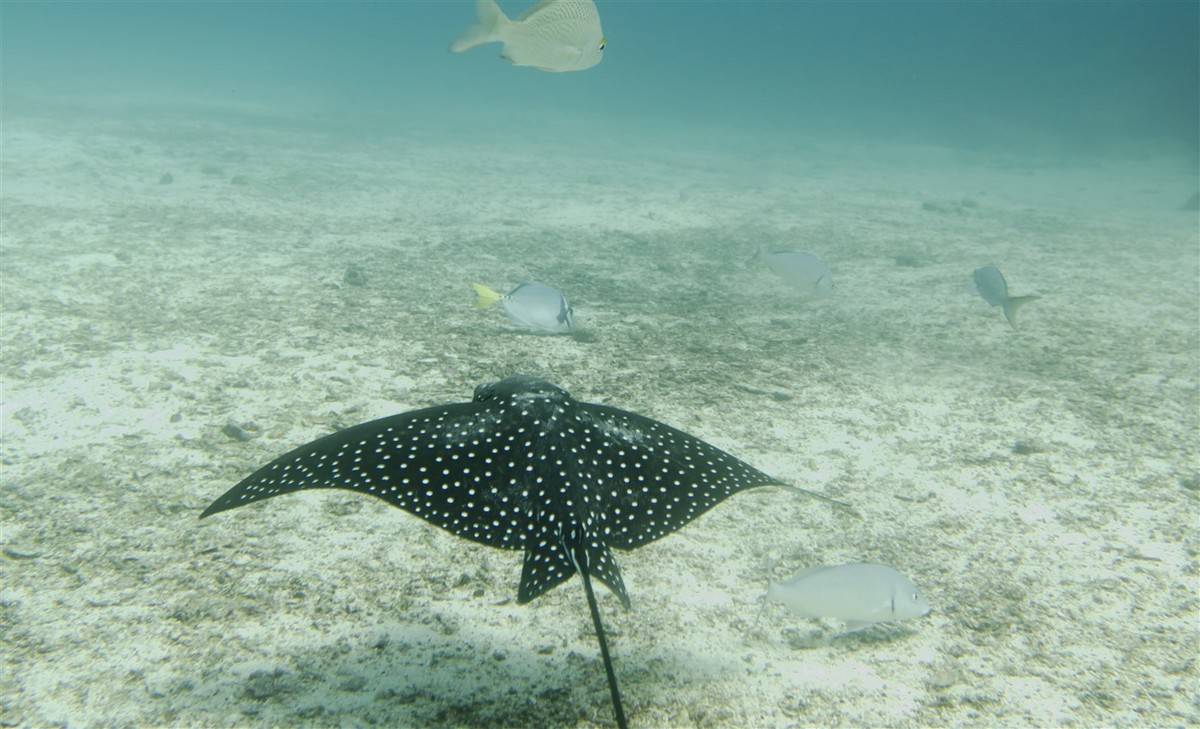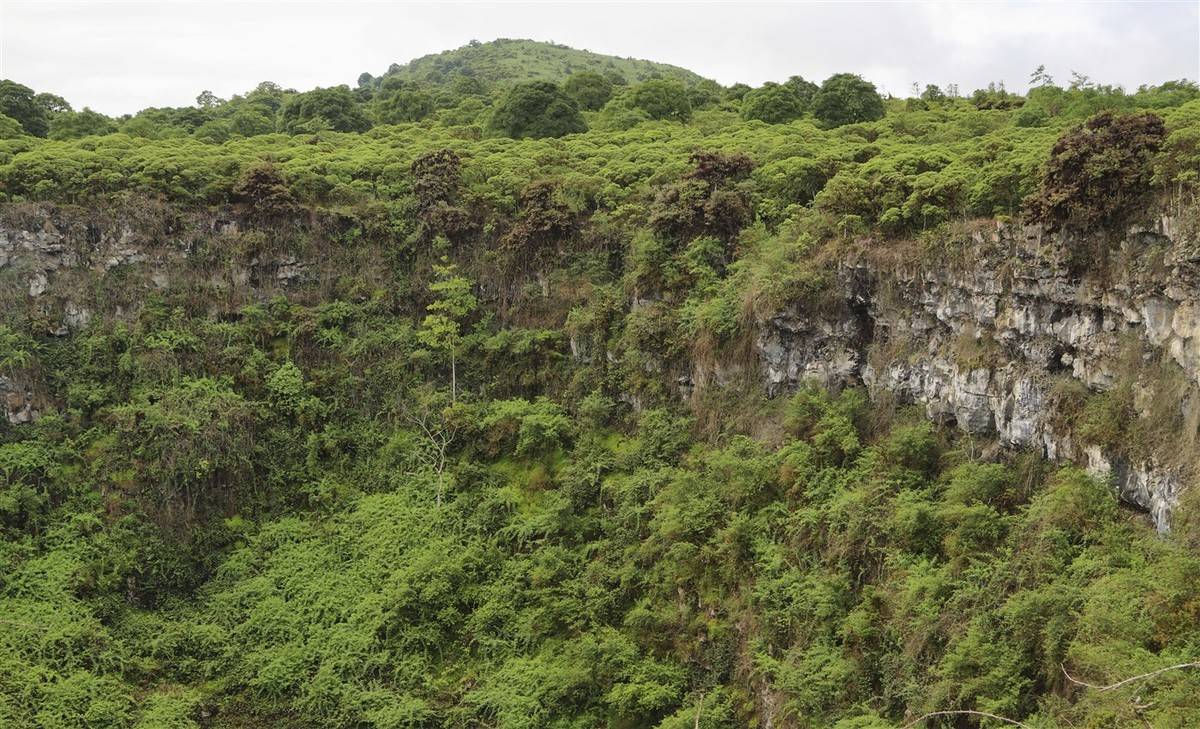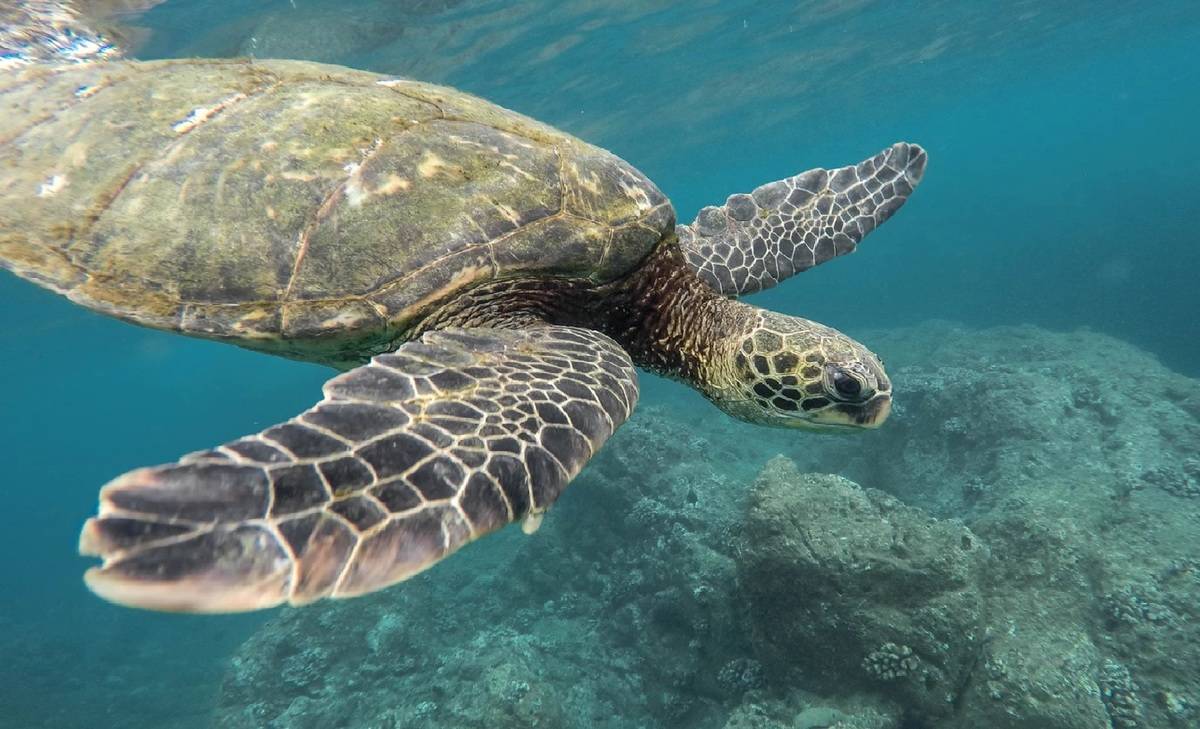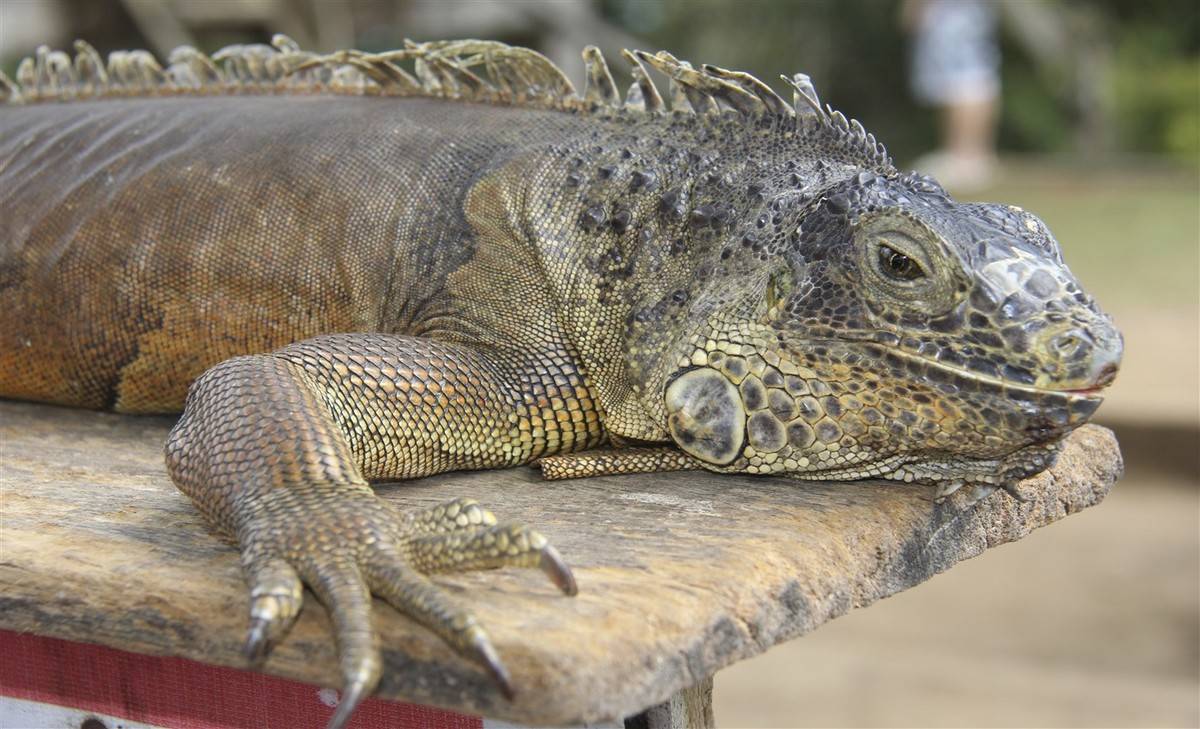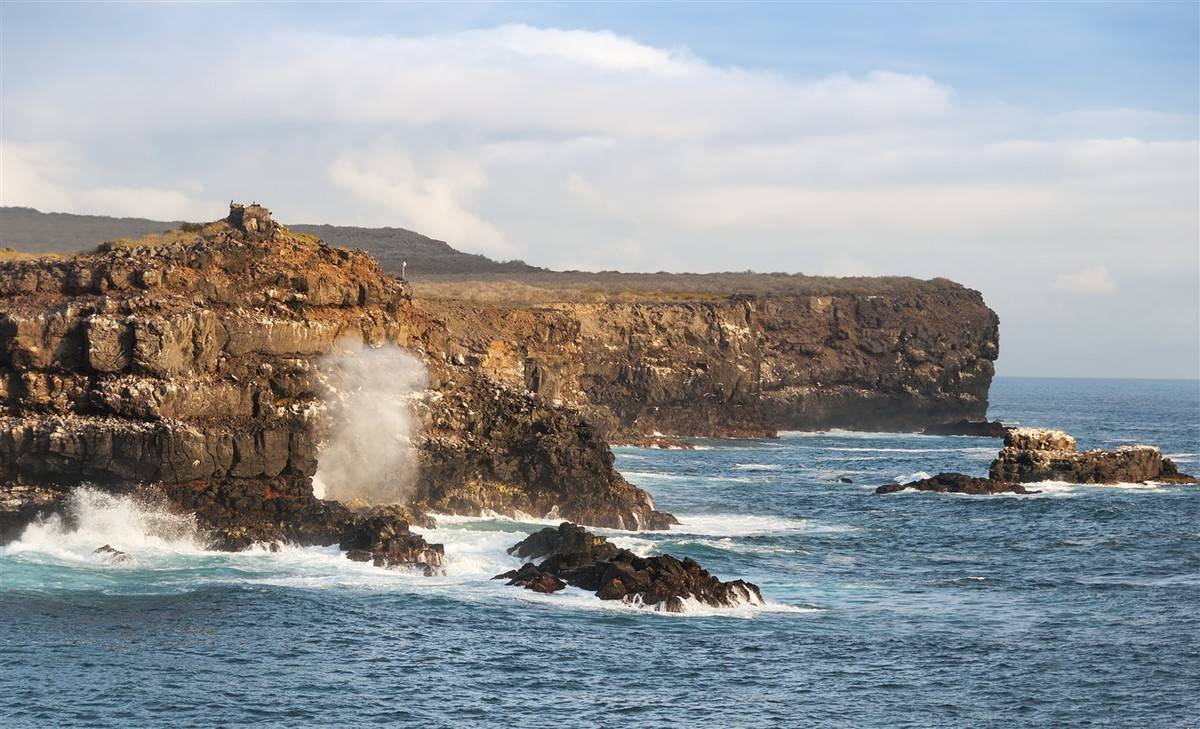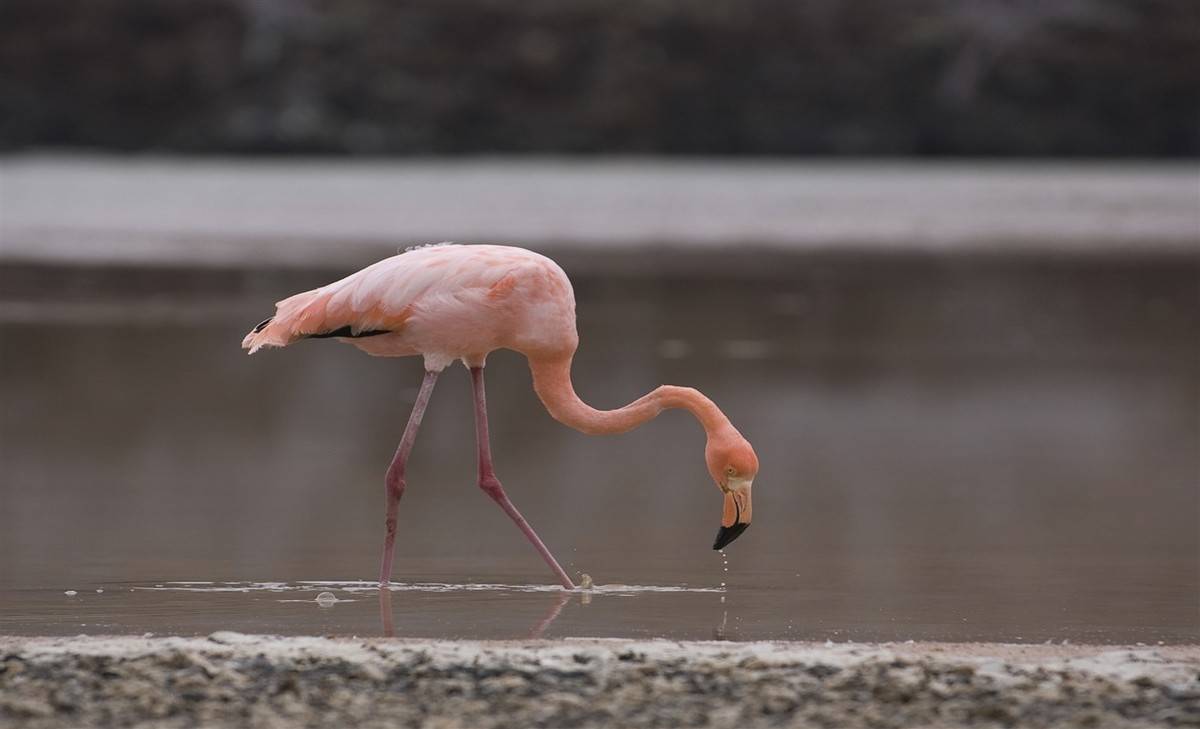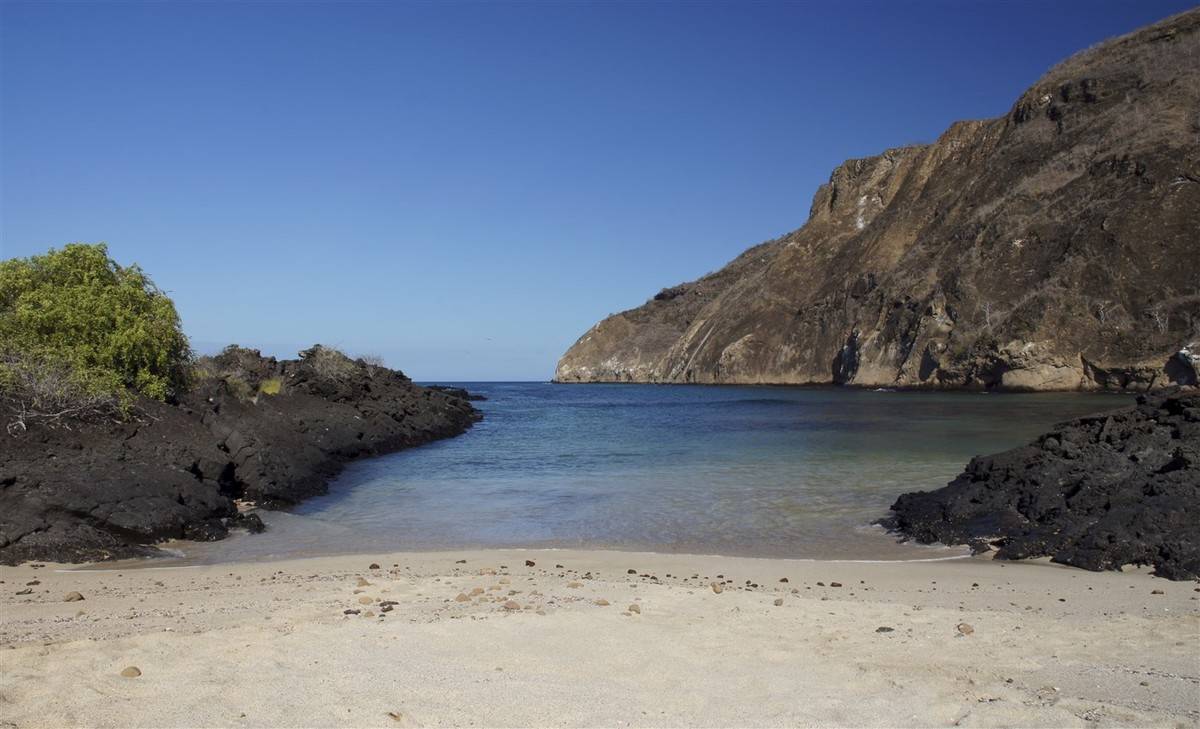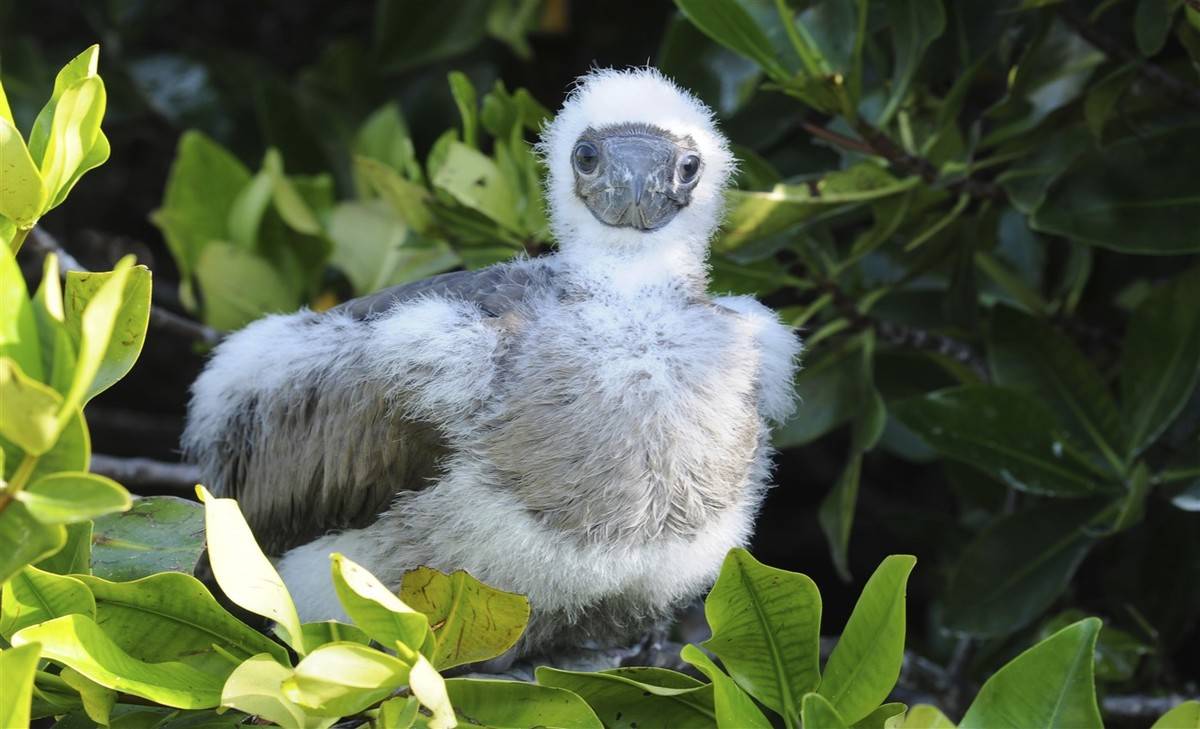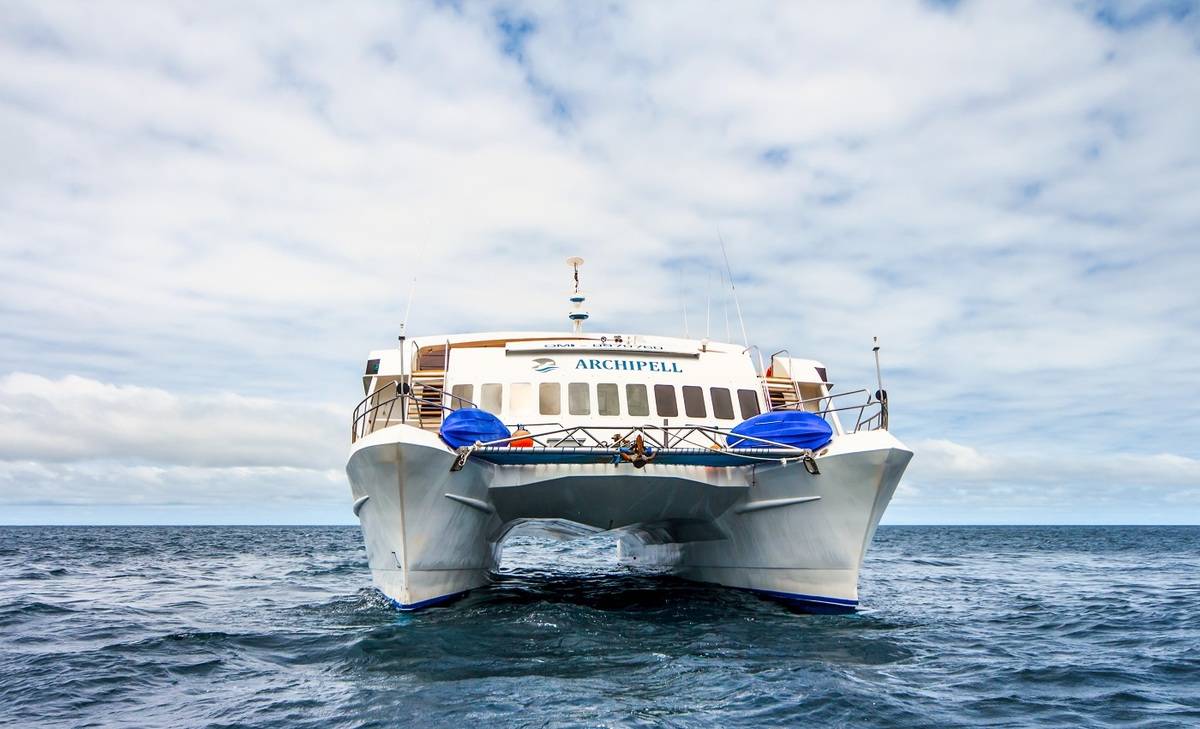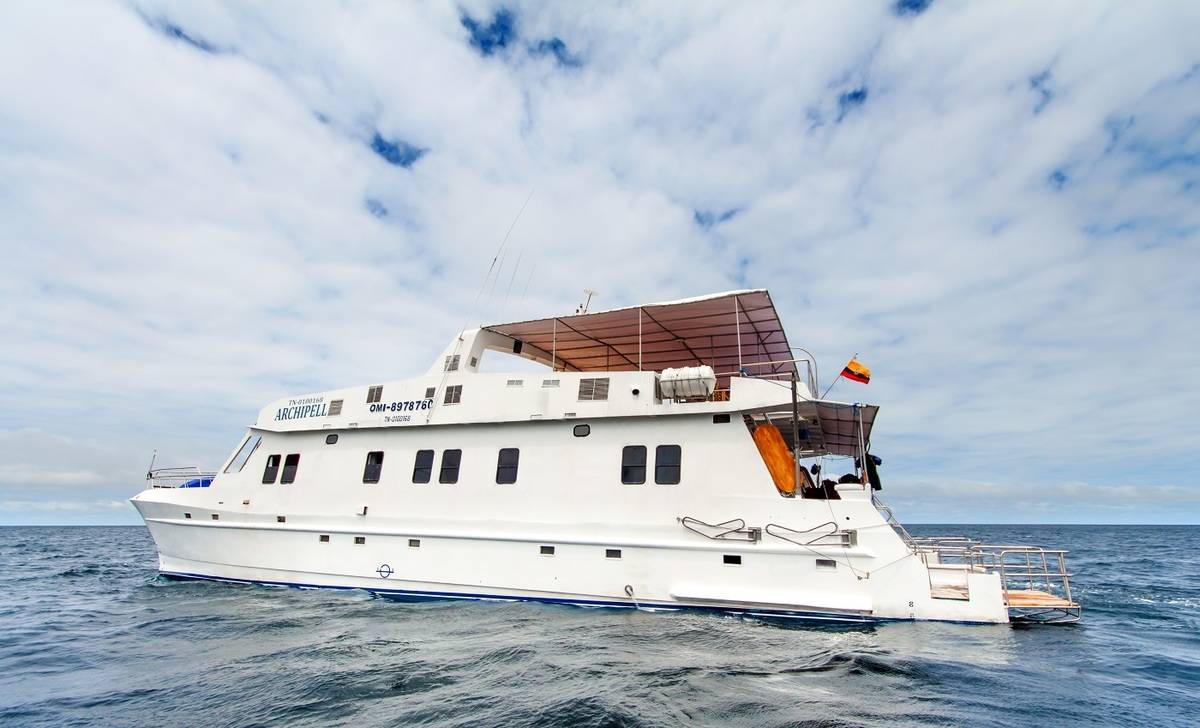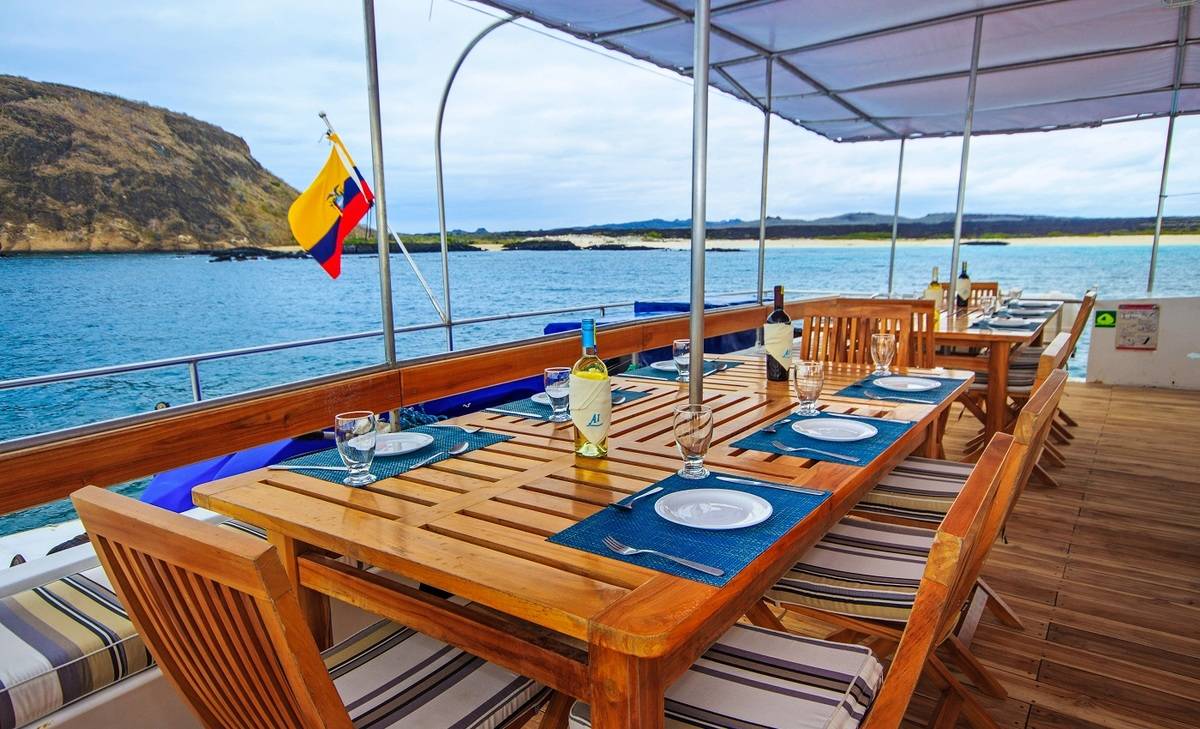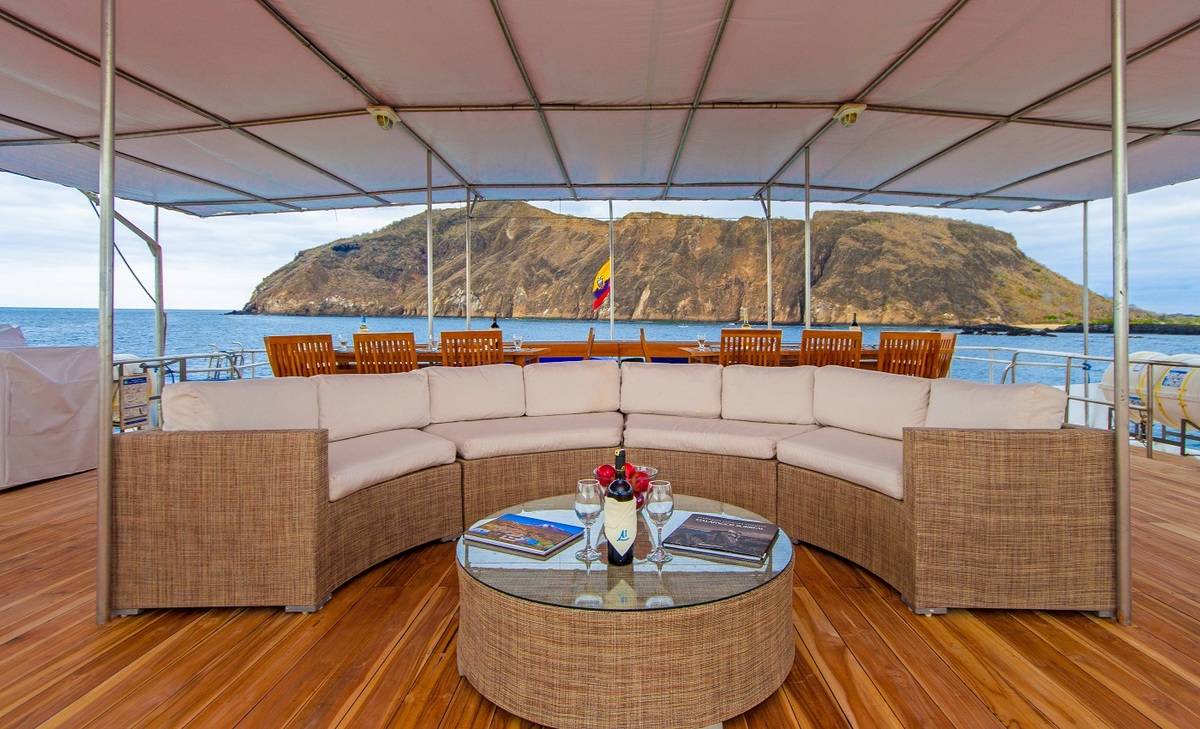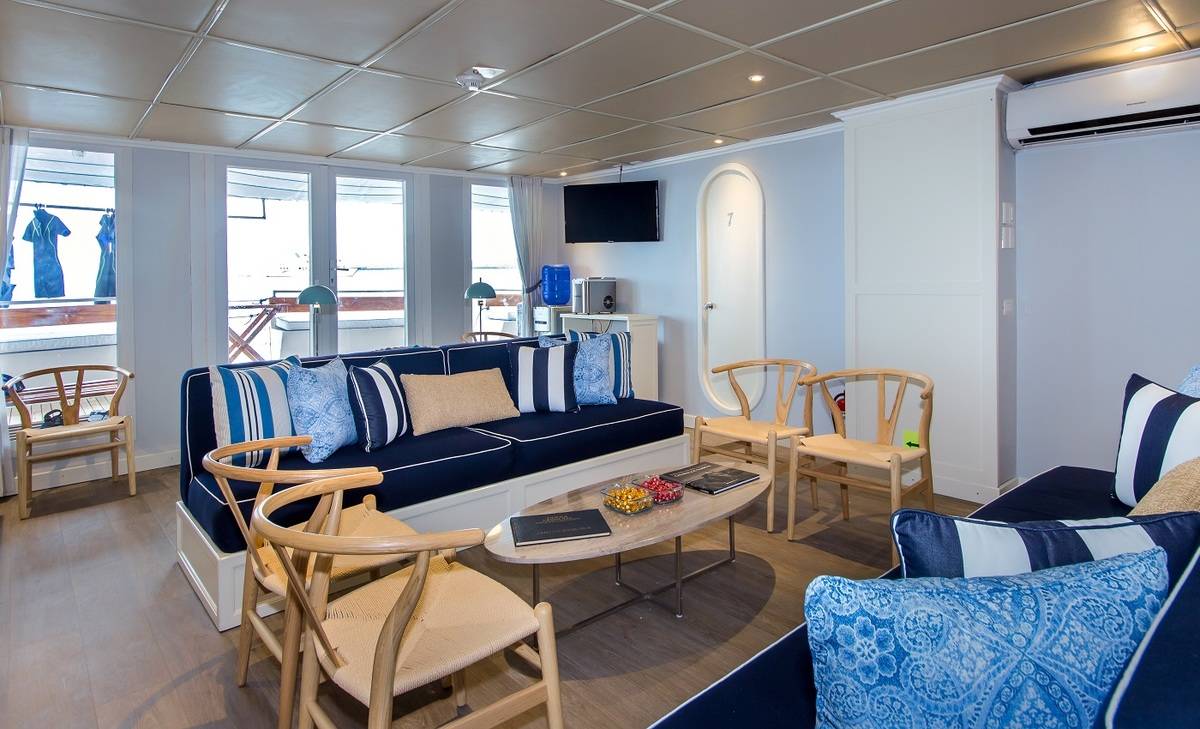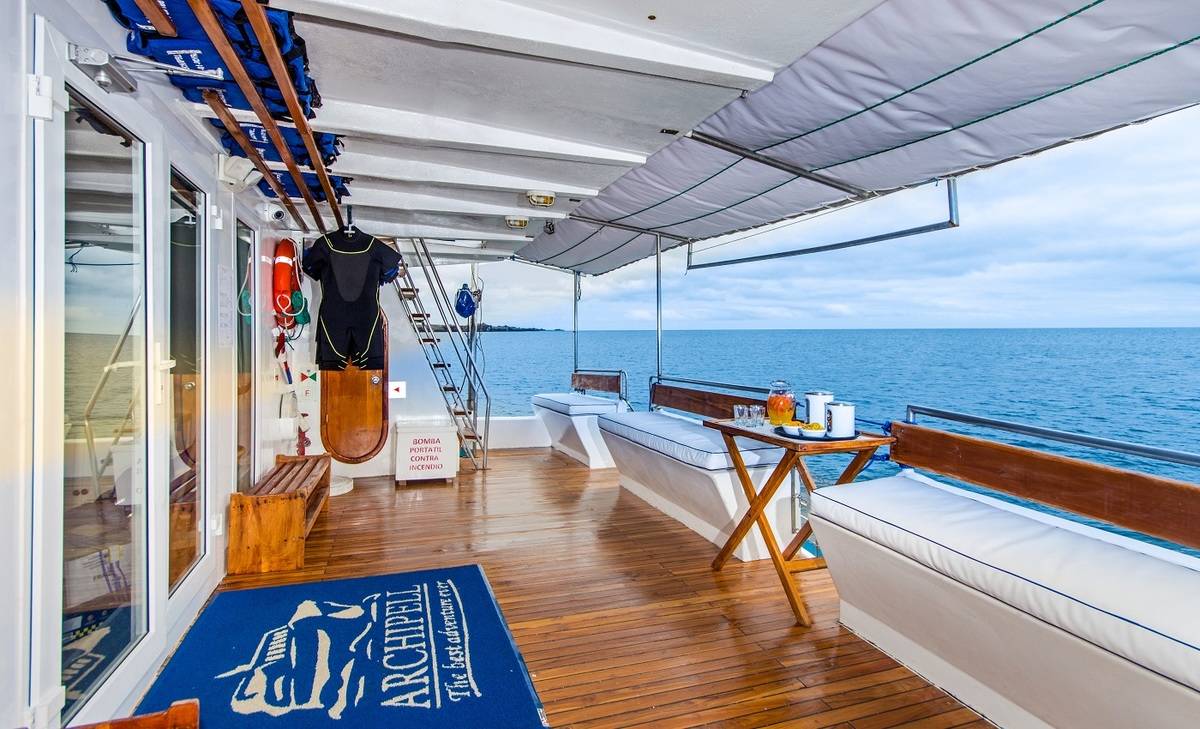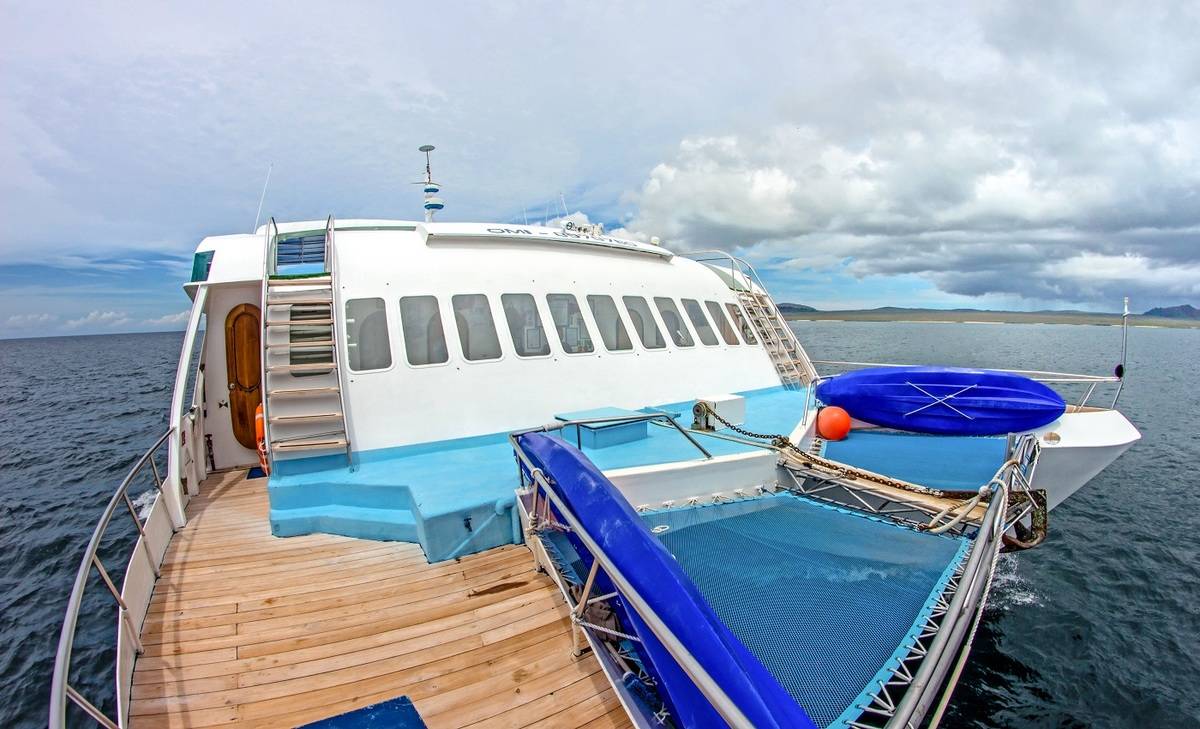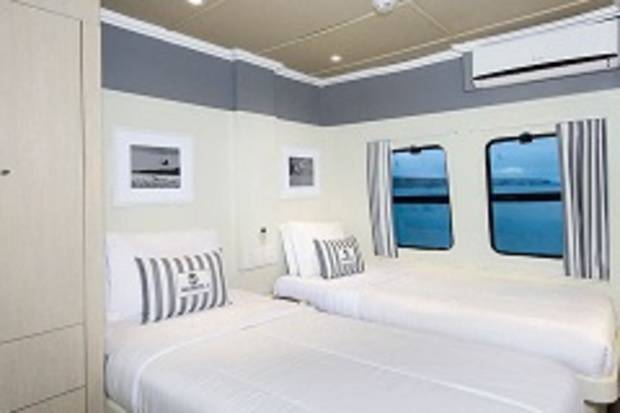Southern, Eastern & Central Galapagos Islands
8 Days - Archipell I
This 8-day tour aboard the Archipel I allows you to witness the incredible scenery and wildlife of the Galapagos. Starting with the amazing highlands landscapes and finishing with the coral sand beach in Cerro Brujo, you will also have the opportunity to swim with sea lions in Isla Lobos, explore the historical Post Office Bay and observe the famous red-billed tropicbird of South Plaza.

Home » 8 Day Archipell I: Southern, Eastern & Central Galapagos Islands
Itinerary Highlights:
- See the giant turtles of Santa Cruz Island in their natural habitat
- Visit Post Office Bay and the legendary post barrel that whalers historically used to post their mail in
- Explore Cerro Brujo, one of the first sites visited by Charles Darwin
- Discover the Galapagos' abundant wildlife, including the endemic Hood-Mockingbird, Blue-footed Boobies, and Swallow-tailed Gulls, sea lions and marine iguanas
Itinerary in Brief:
- Day 1: Arrival at Baltra Airport & Highlands (Santa Cruz)
- Day 2: Cormorant Point & Post Office Bay (Floreana)
- Day 3: Gardner Bay & Punta Suarez (Espanola)
- Day 4: Punta Pitt & Cerro Brujo (San Cristobal)
- Day 5: Isla Lobos & Colorado Hill (San Cristobal)
- Day 6: South Plaza & Santa Fe
- Day 7: Champion Islet & Loberia & Asylum of Peace (Floreana)
- Day 8: Charles Darwin Station (Santa Cruz) & departure from Baltra Airport
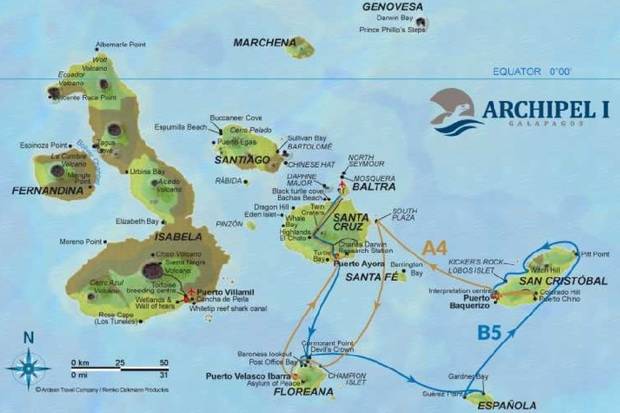
Day 1: Baltra - Santa Cruz Highlands
Our guide will be waiting for you in Baltra Airport and once the group of passengers is completed she/he will accompany you to the Archipell Catamaran which is anchored in Puerto Ayora harbor. After arrival on board, we will check in and give you general information.
After the lunch we will visit the highlands of the island, included a visit to the private farm “Las Primicias”. This reserve offers you one of the best possibilities to see the huge turtles of Santa Cruz Island in their natural habitat. You can observe them from a very close distance.
Day 2: Cormorant Point - Post Office & Baroness Lookout (Floreana)
At Cormorant Point you land on a green olivine sand beach. Following a 100 m long path you will soon reach a beautiful lagoon with flamingoes.
In the afternoon you will visit the Post Office Bay, which still keeps the legendary post barrel that whalers historically used to post their mail in.
Later we will go to “Mirador de la Baronesa” (Baroness Lookout Point) and your naturalist guide will tell you the murder and mystery legend of the Baronesa. This viewpoint is located on the north of Floreana Island.
Day 3: Gardener Bay - Suarez Point (Espanola)
At Española Island you will explore a lot of natural wildlife. It is home to many birds, like the endemic Hood-Mockingbird. Gardner Bay provides you an excellent beach for swimming. Around the small islets nearby, snorkelers will find lots of fish and sometimes turtles and sharks. The bay is also frequented by colonies of sea lions, which like to swim with you.
Suarez Point has one of the most outstanding wildlife areas of the archipelago, with a long list of species found along its cliffs and sandy or pebbly beaches.
Day 4: Pitt Point - Cerro Brujo (San Cristobal)
On the small green sand beach, you will be welcomed by a cacophony of barking Galapagos sea lions. From saltbush and spiny shrubs behind the beach a trail leads up to an area of tropical dry forest vegetation: most of the year leafless palo santo trees, yellow cordia shrubs, tiny prickly pear cacti and carpetweed, that turns red in the dry season. After the pretty steep climb through a gully to the cliff top, you can wander around the only colony in Galapagos that is home to all species of booby.
Cerro Brujo is the remains of a tuff cone. It is one of the first sites visited by Charles Darwin. Captain Fitzroy climbed to the top of the hill to scout out reefs. It has an impressive landscape, where it is often possible to see coastal and migratory birds, including pelicans, Blue-footed Boobies, and Swallow-tailed Gulls, as well as sea lions and marine iguanas. At times the lagoon is completely dry and deposits of salt may be found in the bottom.
Day 5: Lobos Island - Colorado Hill (San Cristobal)
The island is named after the amount of sea lions that rest on the seaside. Though at first sight it appears to just be barren rocks overgrown by palo santo, this low islet is home to male blue footed boobies and great frigate birds that try to impress the females with clumsy dances heaving their striking blue feet or blowing up their balloon-sized scarlet pouches. You can also find a lot of life in the intertidal zone, including striking bright orange sally lightfoot crabs and marine iguanas on the boulders. On the horizon you can distinguish the contours of Kicker Rock. This impressive rock islet has become one of the landmarks of Galapagos.
Cerro Colorado Tortoises Protection and Growing Centre is located at approximately 40 minutes by bus to the southeast of the island. This centre was built to improve the status of the population of the island tortoises. It includes a large corral, a visitor centre, breeding centre and an interpretative trail. Along this trail it is possible to see different species of native and endemic plants as well as birds including the San Cristobal Mockingbird, Yellow Warblers, and many species of finches and the Galapagos flycatcher.
Day 6: South Plaza & Santa Fe Islands
South Plaza is located at the east of Santa Cruz Island, and forms part of two islands known as Islas Plazas. Despite its small size, some of the most interesting and outstanding species of the Galapagos are found here. The Plazas land iguanas are smaller than its relatives found on other islands. There are several hybrid iguanas, a result of crossing a male marine iguana and a female land iguana; they are unique, recognizable at first glance by their black/gray color, with a land iguana's crest, but face and tail of the marine iguanas.
Located in the southeastern part of the Galapagos, this island was formed from an uplift instead than from a volcanic origin; this is why it is mostly flat. There are some theories that assure that this could be the oldest island in the Archipelago. Santa Fe is the home of a number of endemic species like the Galapagos Hawk, Galapagos snake, Galapagos mockingbird, rice rats and one of the two species of land Iguanas of the islands. After disembarkation in the beautiful and clear waters, you will be in contact with one of the many sea lion colonies.
Day 7: Champion Islet - Loberia & Asylum of Peace (Floreana)
Bottlenose dolphins frequently escort our passage to Champion Islet and you can see them from nearby jumping the wakes! Underwater, Galapagos sea lions are playful acrobats that become the number one attraction. You will also see lots of reef fish, and perhaps a green Pacific turtle. An inflatable dinghy ride along the shoreline of this islet offers sightings of lots of seabirds that are endemic to the archipelago, including Galapagos penguins, blue-footed boobies, magnificent frigate birds, red-billed tropicbirds, swallow-tailed gulls and lava herons.
The Asylum of Peace Island is of historical interest for guests. This hike goes past a mesmerising cave and visits a fascinating
freshwater spring. La Loberia beach gets its name from the huge amount of sea lions that populate the island and rest on the sand.
It’s an ideal spot to relax by the ocean, go snorkelling as well as enjoy the sea lions that live there.
Day 8: Charles Darwin Station (Santa Cruz) - Depart Baltra
Today, visit Charles Darwin Station. In the tortoise breeding station, you can encounter tortoises of different subspecies, which get prepared for reintroduction to their natural habitats.
Assisted by the naturalist guide and some crew members the dinghy will bring you and your luggage to Baltra, where we take the airport shuttle. Your guide will accompany you until the check-in counters in the departure hall.
Cabin Details
Ocean View Cabin
2 cabins with queen bed and 6 cabins with 2 single beds, two sea-view windows, private bathroom, closet & air conditioning.
Archipell I Deckplan
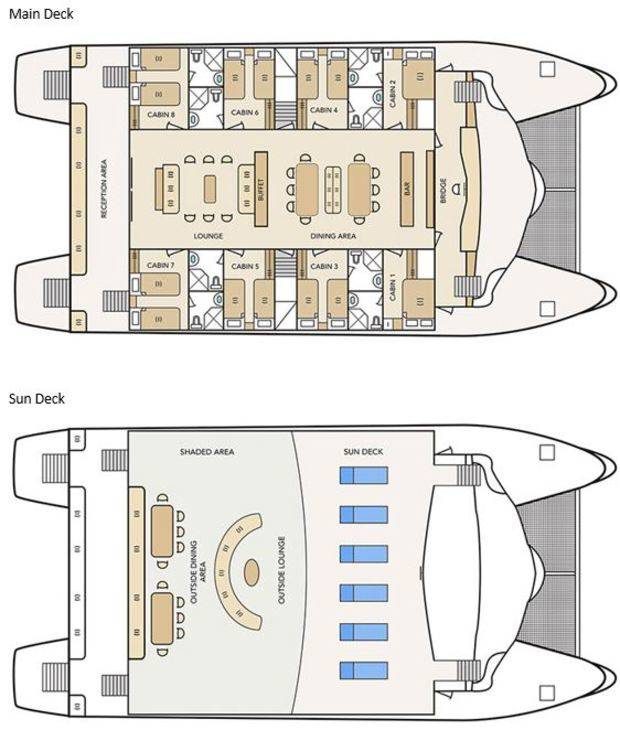
Specifications
- Year Of Construction: 2005
- Category: Tourist Superior
- Passengers: 16
- Cabins: 8
- Social Areas: Comfortable dining room, bar and lounge, library
- Length: 27m
- Beam: 11m
- Electric Power: 110v and 220v
- Machinery: 2 Cummins IMO 240 hp each one
- Speed (knots): 10 knots
- Crew: 9
- Naturalist Guide(s): 1
Whats included?
- Accommodation in double cabins (double bed or 2 single beds) with private bathroom
- All meals, water, tea & coffee
- All excursions as described in the programme (subject to change) with bilingual guide (Spanish / English)
- Airport assistance at Quito airport (when flight and cruise are booked together)
- All transfers to Galapagos (Airport-Yacht-Airport only included when booked together)
- Snorkelling equipment
- Bath and beach towels
What’s not included?
- International and National (Ecuador-Galapagos-Ecuador) flights
- Galapagos National Park Entrance, US $ 100 (To be paid upon arrival, in cash)
- Transit Control Card, US $ 20 (To be paid upon departure from mainland to Galapagos, in cash)
- Galapagos Airport Transport, if the flight has not been booked together
- If necessary, single room supplement
- Optional wetsuit (to be paid in cash only)
- Soft drinks and alcoholic drinks (to be paid in cash only)
- Personal expenses, extras & gratuities
- Travel insurance

